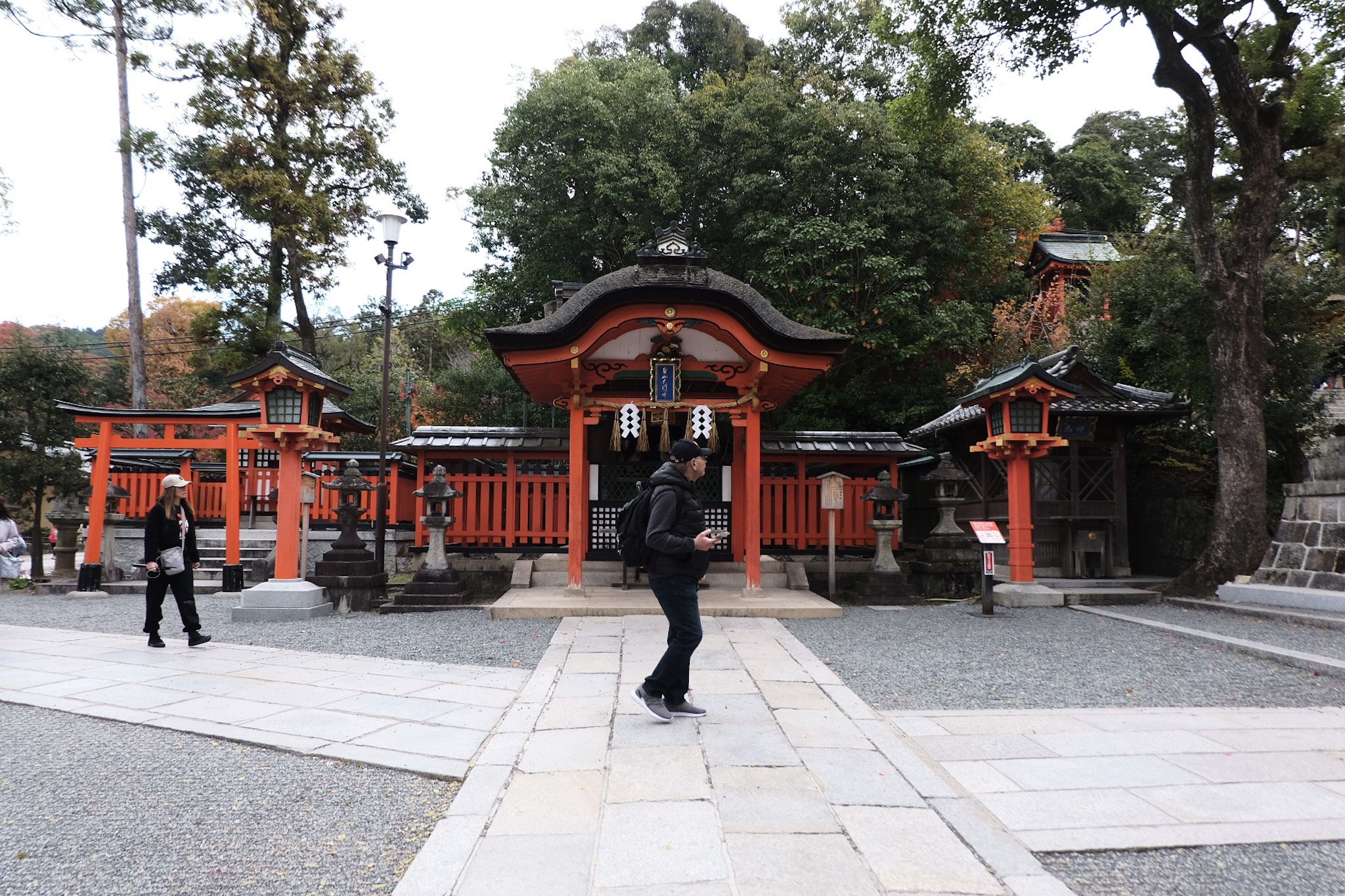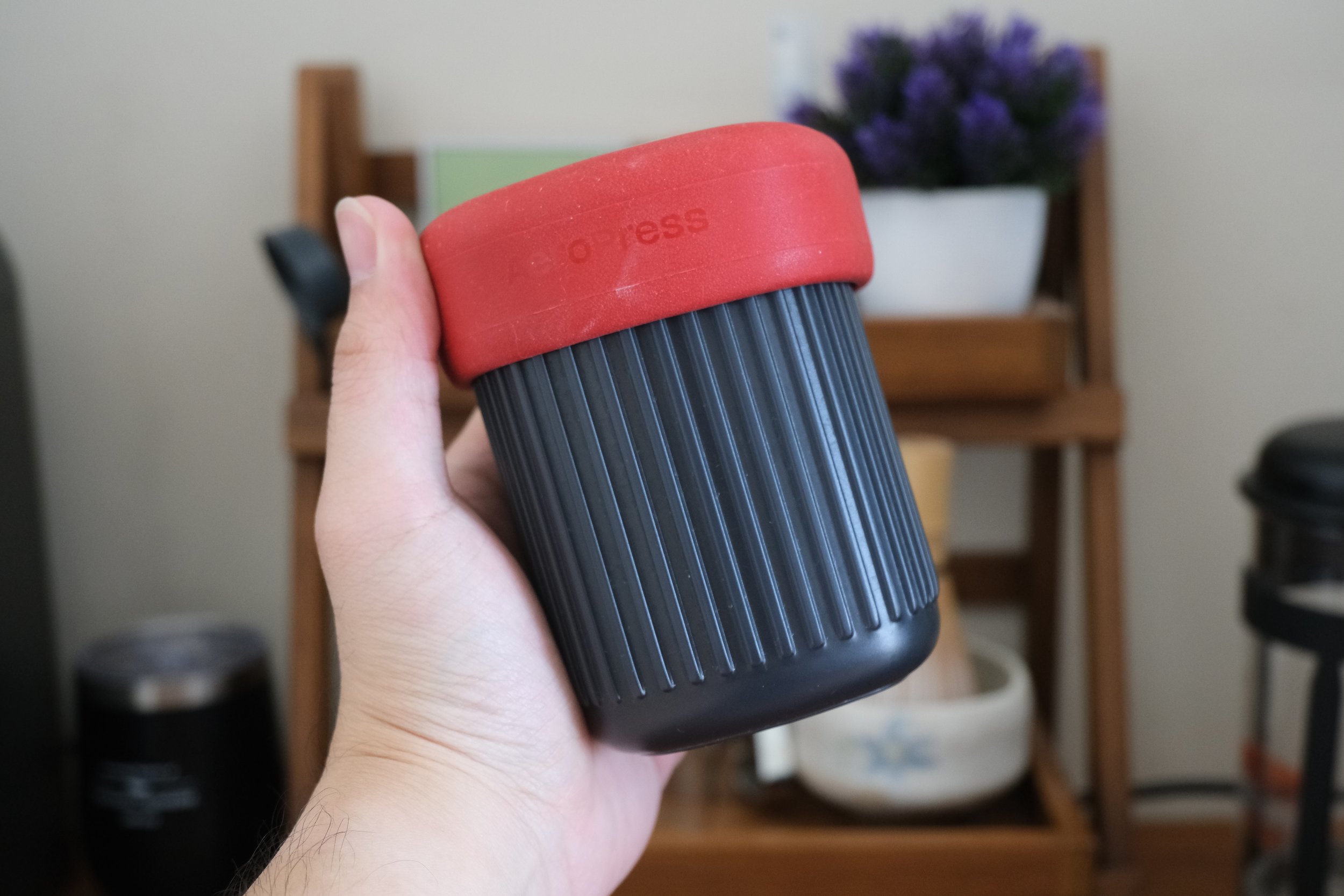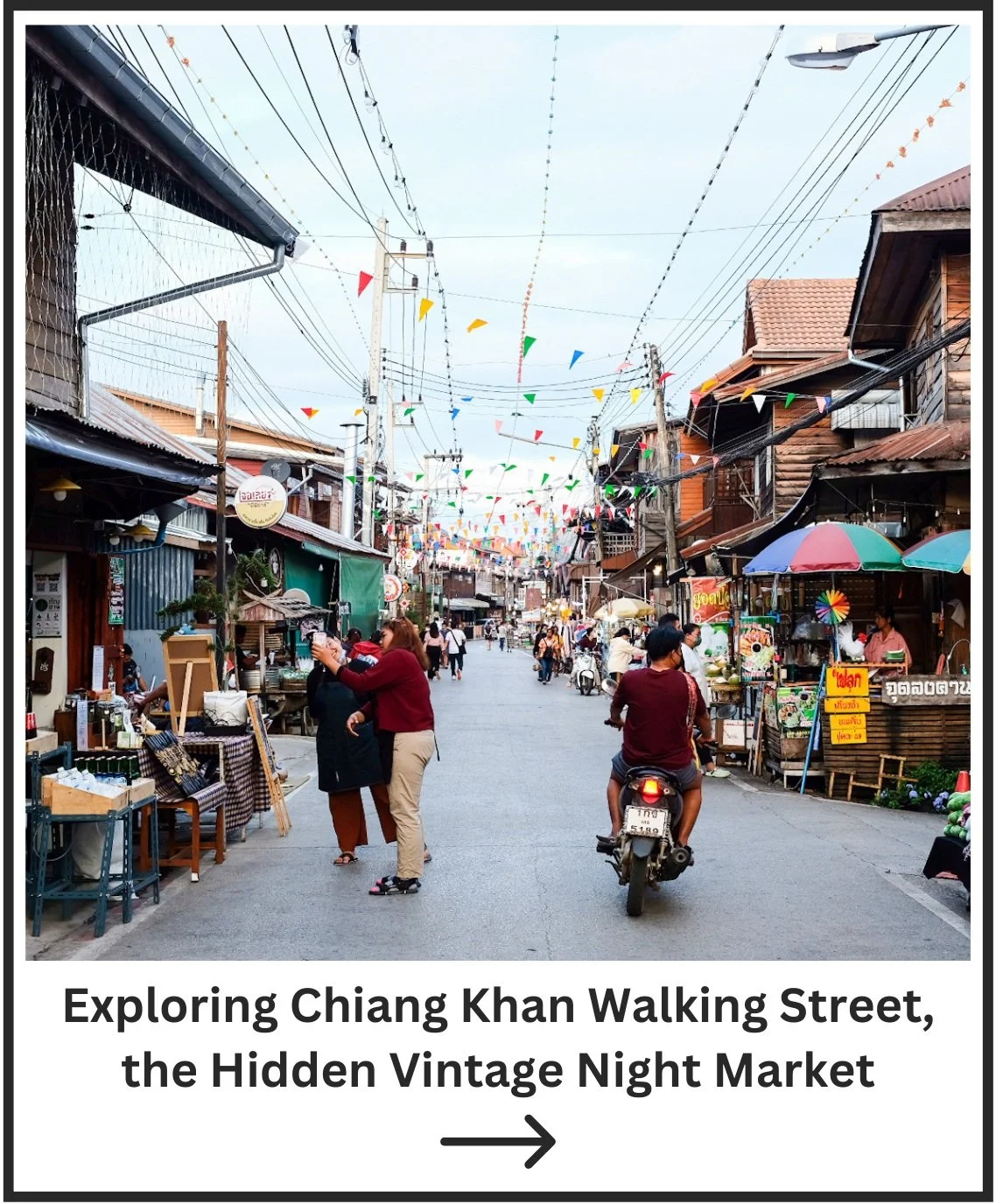Visiting Fushimi Inari Taisha, 10,000 Torii Gates at this Famous Kyoto Temple!
Something you’ll only see in a Studio Ghibli Film? No this is real life!
The Fushimi Inari Taisha (shrine) is one of the most famous tourist attractions in Kyoto, Japan. You might’ve seen these tall red and black pillar gates in media depicting Japan, those are known as Torii Gates, and if you are hoping to see one while traveling in Japan, The Fushimi Inari Shrine has got you covered with literally thousands of them :).
Once you are done visiting the Fushimi Inari Shrine you should definitely take a visit to Kiyomizu-dera, a gorgeous temple overlooking a sea of cherry blossoms. These two locations are the must-see things in Kyoto. Coming to Kyoto and only seeing one of these attractions is like eating a Peanut Butter & Jelly Sandwich.
Affiliate Disclaimer: This page contains affiliate links. By clicking on the links and purchasing the product, I will receive a partial commission at no cost to you. All of these products are ones that I fully trust and recommend with my heart. Thank you for your support!
The Biggest Dedication to the Kami Inari
An area to wash your hands before entering the shrine
A little bit of backstory before we start exploring, The Fushimi Inari Shrine was constructed around 711 AD before Kyoto was named as the capital of Japan.
The shrine itself is dedicated to the 5 Inari deities, there are approximately over 30,000 Inari shrines throughout Japan, but the Fushimi Inari Taisha in Kyoto is the main one, the head shrine as it is known.
The Inari are the Japanese Kami (sort of like Gods) of fertility, rice, tea, sake, agriculture, industry, and foxes (which will be explained later on).
The Fushimi Inari complex houses about 10,000 Torii gates, some of which are donated to the shrine by various businesses and companies, this is because the Fushimi Inari Shrine is also known as a place of worship and praying for merchants and good business.
Fun Fact: The Thai beer company Singha Beer, donated a Torii shrine as a prayer for good business between Thailand and Japan, as a sizable chunk of their customers are Japanese.
Hiking The Endless Rows of Torii Gates
Imagine walking through here alone at night
The Fushimi Inari Taisha complex is HUGE and part of that space is located atop a 233 meter tall mountain (also named Inari).
Unfortunately, I didn’t go right to the top because I was pressed for time and I was with my parents whom are way past their prime. But if you are strong you can totally hike up the mount Inari through 10,000 Torii gates.
If you are planning on hiking through the shrine, be warned that there are a ridiculous number of tourists and the hike might be noisy and uncomfortable. If you want to explore the shrine without the tourists, there are some local guided tours that brings you to hidden hiking paths and thoroghly explore points of interests in the Fushimi Inari Taisha complex, plus you won’t get lost.
Get ready for some exercise!
Throughout the Fushimi Inari Taisha there are multiple points of interests, you can use these to determine how far you have gone up the mountain:
First Torii Gate
Second Torii Gate
Romon & Gehaiden
Hendon
Senbon Torii (1000 Torii)
Okusha Hohaisho
Kumatasha
Crossroads
Summit
Man was just standing there and wouldn’t move… Guess he’ll be part of my picture :)
In total if you are planning to hike up Mount Inari, the trek will take around 2-3 hours, more if you are spending time at the various points of interests along the way.
For my visit, I only stayed at the ground floor while exploring a bit of the first level of the Fushimi Inari Taisha complex, which is around the 6th PoI mentioned above, the Okusha Hohaisho.
A kitsune in all its glory, the item in its mouth is wheat
You’ll notice a lot of statues of foxes (Kitsune) dotted around the shrine’s complex, this is because foxes are known to be the divine messengers of the Inari deity.
And in Japanese mythology foxes like to eat deep fried tofu (aburaage). So, along the way up to the peak of Mount Inari, you can find various vendors selling dishes such as:
Inari Sushi - Fried tofu pockets stuffed with sushi rice and various fillings
Kitsune Udon - Udon noodle soup topped with a big sheet of deep fried tofu
Another interesting fact is that these Kitsunes are wearing red bibs, yodarekake, these are meant to ward off evil demons.
Such good boys and girls.
The Romon gate is an impressive structure from head on
On the ground floor of the Fushimi Inari Shrine, you’ll find the Romon Gate a gorgeous structure indicating the entrance to the shrine.
The story goes that the Romon Gate was rebuilt by Shogun Toyotomi Hideyoshi after the gate was burned down during the Onin War. The reconstruction was a prayer to the recovery of the Shogun’s mother’s illness.
During certain festivities, dances will be performed on this stage
Just behind the Romon Gate is the Gehaiden Stage, an outer worshipping hall for followers and visitors to the Inari.
Beyond the stage is the Honden, a building with a Chinese style roof dedicated solely to the housing of the deities. This building is inaccessible to the public as you are meant to pray at the Gehaiden.
Alright guys, the start of the Senbon Torii tunnel, we’re going in!
Once you get past all the important buildings on the ground floor, it’s time to make your way up mount Inari and go through the first batch of Torii Gates, the Senbon (1000) Torii tunnel.
Walking through the Torii gates feels… Magical. I’m not sure how else to describe it, even though you are basically walking through a tunnel, something about the endless orange columns and black Kanji feels mystical.
It’s a weird feeling, even though I am from this part of the world and am familiar with these cultures, it still feels like fantasy to me.
The Torii gates are painting in this beautiful orange/reddish color
Honestly the whole hike would’ve been a lot better if there were less tourists and the atmosphere is quieter.
I went during mid-day so if you are planning to come here, I would say the best time to go to the Fushimi Inari shrine is around 7 or 8am when the weather is cool and misty, and the other tourists are still brushing their teeth.
If you want a creepy atmosphere you can totally visit Fushimi Inari Taisha and hike up the mountain at midnight, Yes! I’m not joking, Fushimi Inari Taisha is open 24 hours a day, all days of the week.
I only had the chance to go during the daylight hours, if I get the chance to go during the night, I’ll definitely update this blog post with pictures for you guys :)
That guy in the middle looks like me but he is not me
Once you get passed the 1000 Torii tunnel, you’ll arrive at the Okusha Hohaisho, a small rest point complete with a shrine, snack shop, and restroom if you need it.
This is where the real hike to the summit of Inari mountain begins, the Senbon Torii was just a little taster, remember there are still 9,000+ more Torii gates to go through.
Unfortunately this is where my adventure ends, If you would like more information about the path up Inari Mountain I found this great website which goes into detail about all the points of interests you’ll encounter at Fushimi Inari Taisha.
Fushimi Inari Taisha Street Food Market
After a tiring 3 hour hike, why not spend another 3 hours eating and shopping at this street ;)
This wouldn’t be Feastography if I didn’t explore some of the greatest things to eat at Fushimi Inari Taisha!
Aside from the Kitsune themed dishes you can find within the compounds of the shrine, there is a road on the left side of entrance to Fushimi Inari Taisha that is filled to the brim with street food stalls.
This is such a perfect place to eat through, especially after a long 3 hour hike up the mount Inari.
Seriously the best strawberries I’ve ever had in my life
Oh Ichigo my beloved!, Strawberries in Japan (Ichigo) are on a whole ‘nother level, and at street food areas like this, these guys are everywhere.
Some of the most popular strawberry based snacks you’ll find are Sugar Glazed Strawberries and Red Bean Filled Mochi with Strawberry.
The strawberries in Japan are sweet, tart, not too sour, and oh so juicy! If you get the mochi snack, the juicy tartness from the strawberries complement the thick nutty Anko bean paste perfectly.
When in Japan, try out some strawberries.
I covered this man’s face because he does not deserve any recognition for his rude service
One stall that I would not recommend is this mozzarella cheese filled pancake stall. The snack itself is quite tasty if you love carbs and it’s in the shape of 10 Yen coin which is fun.
But I cannot, in good faith, recommend you purchase from this stall because of the horrible attitude of the owner. I made the mistake of paying with a handful of coins, understandably the owner doesn’t want to accept a large amount of coins that was my mistake for annoying him, but rather than politely declining, he threw the coins back at me.
And he had the audacity to give his hand out waiting for me to give him a bank note.
No f*cking way I will do business with you, I’ve been to Japan more than a dozen times and this was the second time I have ever met a rude Japanese person.
Juicy Wagyu on a stick, what more could a man ask for?
Anyway, another stall I would recommend is trying out the grilled Wagyu Beef Skewers, they have 3 different types of Wagyu beef on offer with each being an increase in quality and flavor.
The Wagyu skewers were tender, and flavorful as always. You get the option of a salt and pepper seasoning or BBQ sauce, I opted for salt and pepper so that I can taste the pure flavors of the Wagyu.
Details About Fushimi Inari Taisha
Th Fushimi Inari Taisha is a shrine in Kyoto, Japan dedicated to the Inari Okami, the Japanese deities of foxes, agriculture, and industry. The shrine is a famous Kyoto temple which houses over 10,000 Torii gates that stretches from the base of Mount Inari all the way to the summit.
Visitors usually spend about 2-3 hours here if they want to hike up all the way to the top of the Fushimi Inari Taisha.
Location: 68 Fukakusa Yabunouchicho, Fushimi Ward, Kyoto, 612-0882, Japan
Opening Hours: Open all day | Mon - Sun
Entrance Fee: Free Admission
How to get to Fushimi Inari Taisha
The Fushimi Inari Taisha is located in the southern neighbourhoods of Kyoto and can be accessed by JR trains from Kyoto Station.
Assuming you’re starting at Kyoto Station, hop on the JR Nara Line to Inari Station, from there you literally just have to walk forward as the entrance to the shrine is right in front of the station.
If you are looking for JR Rail Pass tickets to make traveling around Japan easier you can purchase an online ticket here and then redeem it at any major JR stations once you arrived in Japan.
Best Hotels in Kyoto
Nohga Hotel Kiyomizu Kyoto - An exceptionally comfortable and clean hotel, located near the Fushimi Inari Shrine.
APA Hotel Kyoto Ekihigashi - A famous chain hotel located in the center of Kyoto city
Hotel The M's Kyoto - A comfortable and trendy 3 star hotel in Kyoto’s city center
Looking for Things to Do in Kyoto?
Perfect Kyoto 1 Day Bus Tour - Explore some of iconic Kyoto attractions with this guided tour
Kyoto Night Foodie Tour - Taste Kyoto’s delicious street food, sake also included ;)
Samurai Experience - Become a samurai, learn the way of the warrior, and practice the blade
Discounted Tours - Browse a variety of attractions, tours, and transports all for a great price
Useful Resources for Traveling in Japan
Tourism Information - All the information you need when traveling in Japan
4G eSim for Japan - 4G 5-15 day eSim for Japan (QR code sent via email)
JR Railway Pass - The most important train ticket to get you around Japan
































